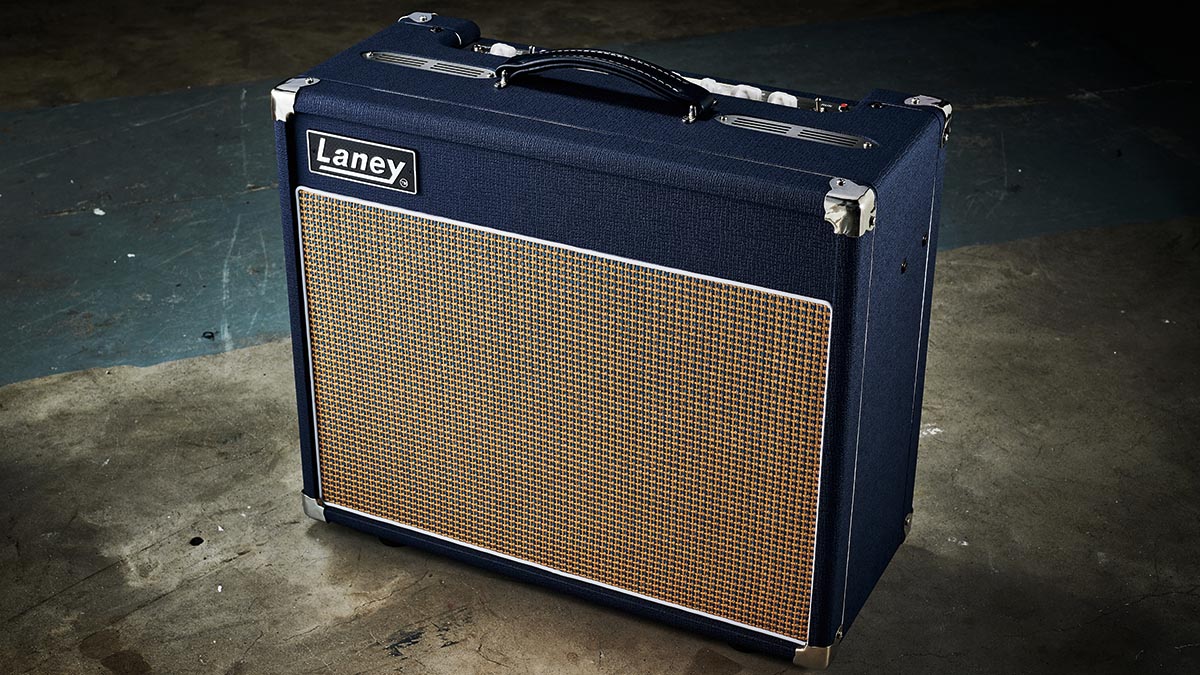Guitar World Verdict
Aimed at pro players and serious amateurs, the Lionheart will satisfy any vintage British tone cravings, and the build quality is first rate. It’s genuinely excellent value for money, too. If you want to experience proper Class A tone, this is definitely worth a try.
Pros
- +
Footswitchable drive and digital reverb expand this combo’s versatility.
- +
Series effects loop has a useful bypass.
- +
Vintage styling.
- +
Kick‑back stand.
Cons
- -
A heavy lump to carry on just one handle.
- -
Currently no alternative to blue finish.
You can trust Guitar World
One of the UK’s longest-established amp builders, Laney has a history that goes all the way back to 1967, when founder Lyndon Laney needed an amp and decided to try his hand at building one.
Lyndon played bass in a West Midlands group called Band Of Joy, which briefly included Robert Plant and John Bonham. Plant and Bonham went on to greater things, while Laney’s amplification designs were winning fans of their own. Faced with a choice of going to university or carrying on with electronics, Laney decided to give amps a try for a few years – and over four decades later, he’s still there.
Today, the Laney catalogue covers every angle, from hand-wired recreations of the classic 1960s heads and combos that powered the massively influential West Midlands music scene, to affordable practice amps that are perfect for home and studio.
Sitting near the top of Laney’s range, the Lionheart series blends vintage British styling with boutique-inspired electronics, including a unique parallel single-ended output stage. The series has recently enjoyed a subtle makeover to further enhance its performance, and here we’re looking at the new-improved L20T-112 1x12 combo.
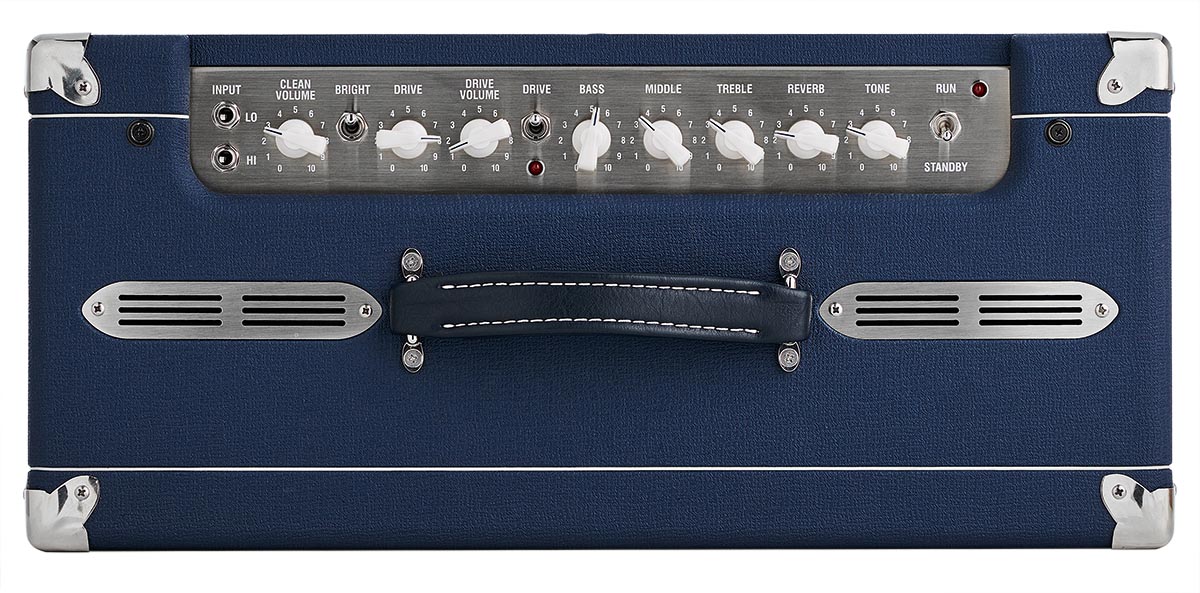
The L20T-112 is built to a high standard and finished in a restrained royal blue vinyl with a tough beige and blue speaker grille. There’s plenty of attention to detail, including a matching blue leather carry handle, white piping and brushed stainless steel vents to match the control panel, which is adorned with white chickenhead knobs that have blue marker lines.
Inside the ply cabinet there’s a single Celestion G12H-30 12-inch loudspeaker and a robust steel open-ended tray chassis, supporting a doughnut-shaped toroidal mains transformer, a choke and a conventional horseshoe output unit.
All three wound components are generously sized and together with the outsized magnet of the Celestion G12H this means the L20T-112 is a rather hefty box to lug around – this combo tips the scales at just under 25kg.
All the latest guitar news, interviews, lessons, reviews, deals and more, direct to your inbox!
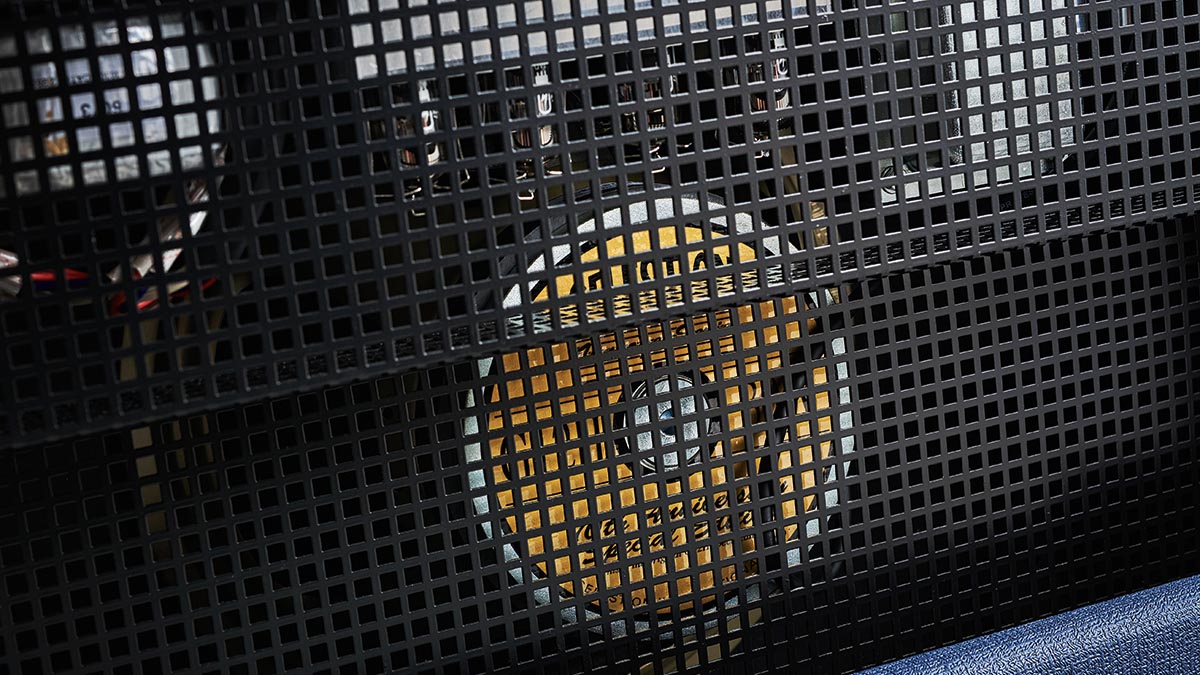
Inside the chassis, most of the electronics are contained on two high-quality PCBs, with one supporting the front-panel controls and a larger one for the main circuitry, including the valve sockets. The wiring is neat, with quality components and clean, bright soldering.
The L20T-112 is a single-channel design with a footswitchable drive section and a digital reverb. The controls are easy enough to navigate and include a clean volume level, gain and master for the Drive section and a regular three-band passive EQ. There’s also a Bright switch and a reverb level, together with a master tone control.
Around the back you’ll find fixed impedance speaker outlets and sockets for the L20T-112’s two-button footswitch and series effects loop, which has switchable levels and a handy bypass option.
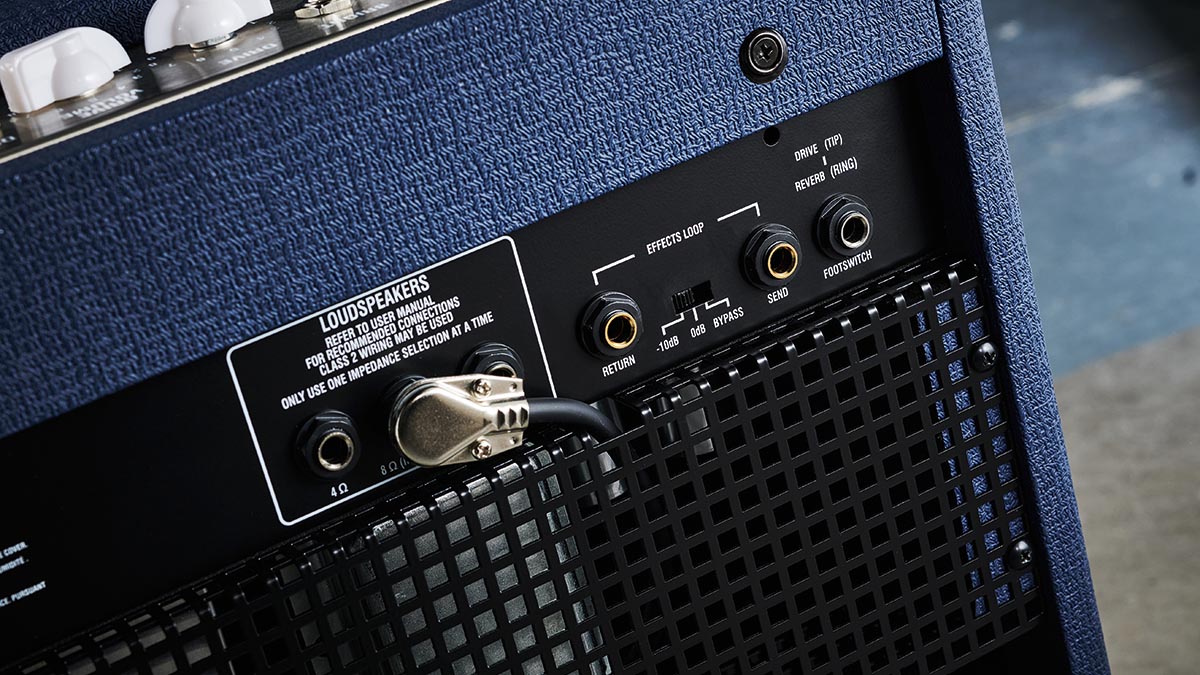
The amp’s power stage is unique to Laney, using a quartet of EL84s wired in parallel single-ended Class A to produce around 20 watts.
Most amps with two or four output valves run in push-pull Class AB; the signal is split into upper and lower halves using a circuit called a phase splitter then sent to separate power valves before being combined in the output transformer. In a single-ended design there’s no phase splitter; the valve runs in pure Class A, amplifying the whole signal.
We’re used to seeing small single-ended practice and recording amps – the L20T-112 gets its extra power by running four single-ended amp stages in parallel. It’s not as efficient as a Class A or AB push-pull design, hence the slightly lower power output, but it does retain the sonic purity of the single-ended configuration.
Overall, the Lionheart exudes a classy, capable vibe that looks the business under stage lights, while being built like the proverbial brick outhouse.
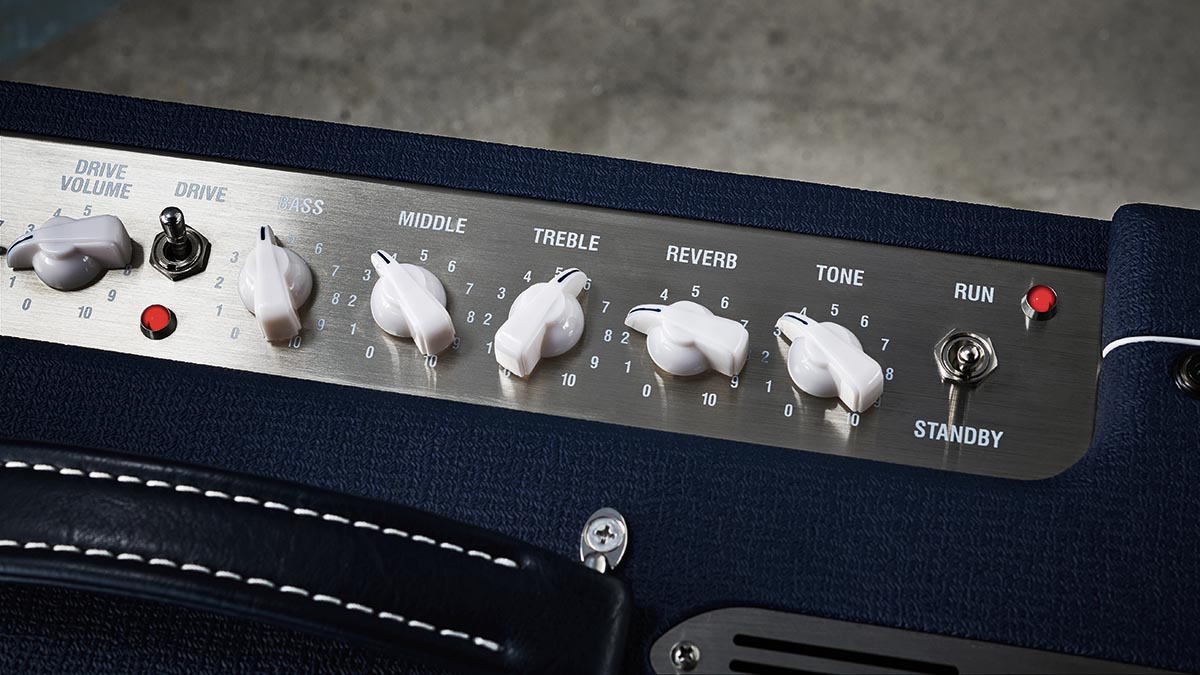
Feel & Sounds
The rich, touch-sensitive voice of this combo makes for a rewarding playing experience. The tone and gain controls are deceptively powerful. At lower levels the clean voice has plenty of headroom, making it ideal for jazz, country and pedals.
Alternatively, you can turn up the clean volume for a great AC/DC-influenced pushed rhythm tone that becomes edgy when you dig in more. This is the sound of the output stage being driven hard, which is the key to authentic classic guitar tone, something that’s still hard to convincingly replicate with digital technology.
As for the Drive channel, there’s plenty of gain on tap here, making it ideal for blues and classic rock, as well as more modern genres. One really cool feature onboard is the master tone control, which sits at the very end of the preamp just before the output stage.
You can use the regular EQ and Bright switch to balance the guitar and then set the master tone to vary the amp’s overall character, from bright and spanky with plenty of treble snap, to warm and punchy, with a powerful midrange that steers clear of becoming nasal.
The buffered series effects loop is clean and quiet. There are two level options to suit stompboxes and rack gear as well as a bypass, which removes the loop circuitry to leave an all-valve signal path. The digital reverb is custom-made in-house and sounds great; its warm decay flatters any guitar.
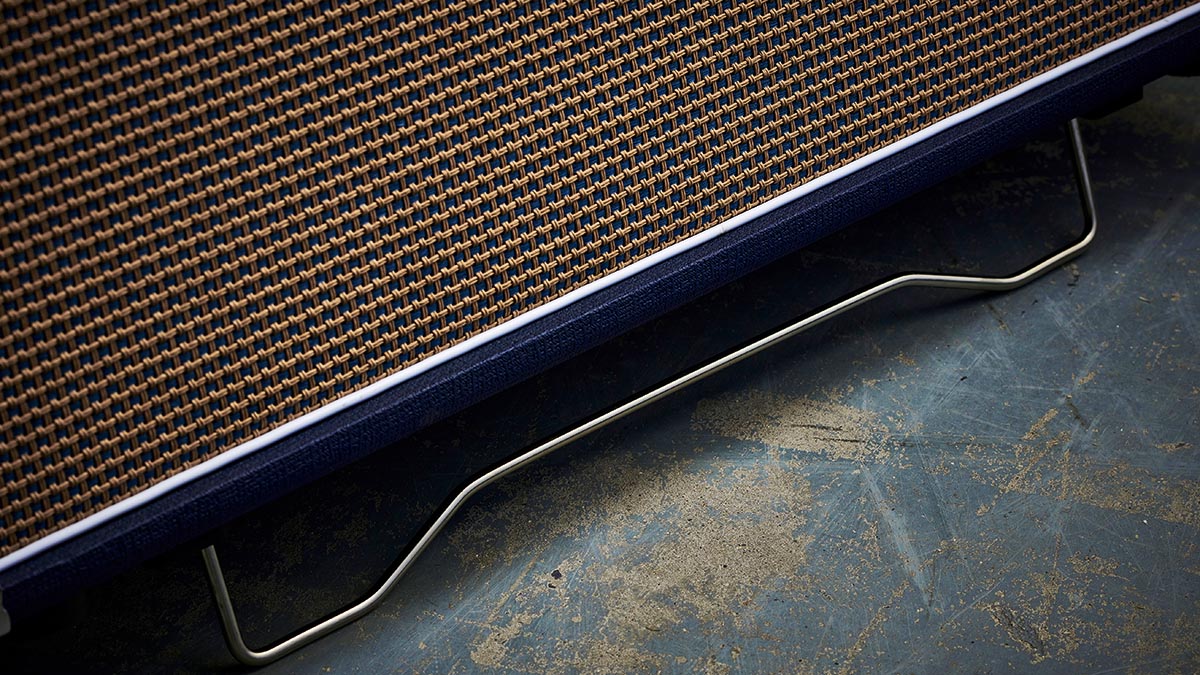
The amp is remarkably free of hiss and hum, thanks in part to that toroidal mains transformer, which has a much tighter hum field compared with traditional horseshoe types, making it a great partner for home and studio use. Meanwhile, if you crank up the volume there’s plenty of power to handle any gig.
The premium Celestion speaker and 20-watt output section easily cope with an averagely loud drum kit, aided by a handy integral kickstand that angles the cabinet back to throw the sound upwards, away from your knees.
Guitarists playing average pub gigs without the luxury of monitors often stand right in front of their amp, with their ears several feet above the loudspeaker, overcompensating with the treble control to correct what they perceive as a muddy tone. This addition helps avoid that, improving your tone and your audience’s experience to boot.
Verdict
We’ve thoroughly enjoyed our time with Laney’s L20T-112. For British blues invasion and classic rock tones it’s a sonically rewarding performer with more than enough power for live gigs, delivering the elusive dynamics of a pushed single-ended valve power stage at sensible volumes.
The tones lurking within the Lionheart’s precision crafted heavy-duty cabinet are versatile and wide ranging, sounding impressively authentic in a wide range of genres, from country and jazz to blues and hard rock. And yet thanks to impressively low noise levels, it’s also just as capable in the studio or at home.
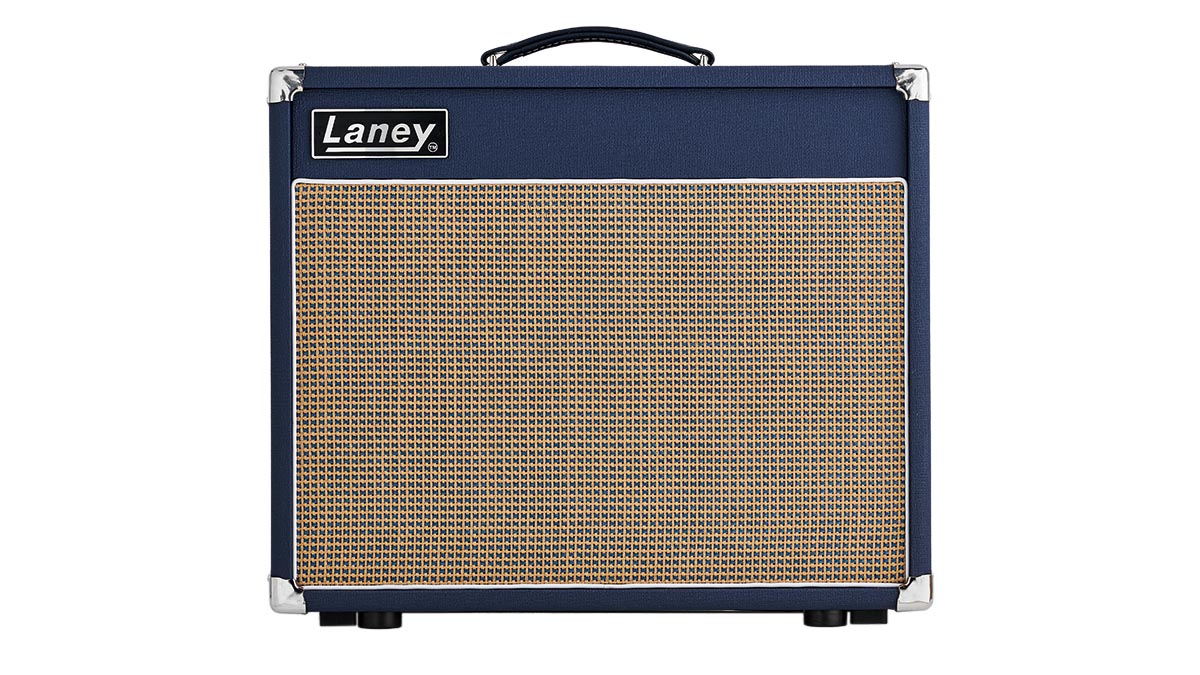
While it’s compact enough for a 1x12, prospective owners should take note that it’s a hefty beast – definitely a case of never mind the quality, feel the weight. We feel it should really come with a pair of side grab handles, like the matching 2x12 extension cabinet, which weighs exactly the same.
The vintage Brit styling looks great, although blue vinyl may not be to everyone’s taste; maybe Laney should test the water with a couple of limited-edition colour alternatives?
Nevertheless, aimed at pro players and serious amateurs, the Lionheart will satisfy any vintage British tone cravings, and the build quality is first rate. It’s genuinely excellent value for money, too. If you want to experience proper Class A tone, this is definitely worth a try.
Specs
- PRICE: £1,049
- ORIGIN: UK
- TYPE: Valve preamp, parallel single-ended valve power amp
- OUTPUT: 20W
- VALVES: 3x 12AX7, 4x EL84
- DIMENSIONS: 465 (h) x 565 (w) x 255mm (d)
- WEIGHT (kg/lb): 24.5/54
- CABINET: Birch ply
- LOUDSPEAKERS: 1x Celestion G12H-30 12”
- CHANNELS: 2
- CONTROLS: Clean volume, drive gain, drive volume, bass, mid, treble, reverb level, master tone, Bright on/off, Drive on/off
- ADDITIONAL FEATURES: Built-in digital reverb, series effects loop with switchable levels and bypass
- FOOTSWITCH: 2-button footswitch (supplied) toggles drive and reverb
- OPTIONS: None
- RANGE OPTIONS: L20H head version sells for £799. There’s also a L5T-112 combo (£849), L5 Studio head (£649) and L20T-212 combo (£1,299). A matching 1x12 extension cabinet costs £399; the 2x12 version costs £599
- CONTACT: Laney
Nick Guppy was Guitarist magazine's amp guru for over 20 years. He built his first valve amplifier at the age of 12 and bought, sold and restored many more, with a particular interest in Vox, Selmer, Orange and tweed-era Fenders, alongside Riveras and Mark Series Boogies. When wielding a guitar instead of soldering iron, he enjoyed a diverse musical career playing all over the UK, including occasional stints with theatre groups, orchestras and big bands as well as power trios and tributes. He passed away suddenly in April 2024, leaving a legacy of amplifier wisdom behind him.
